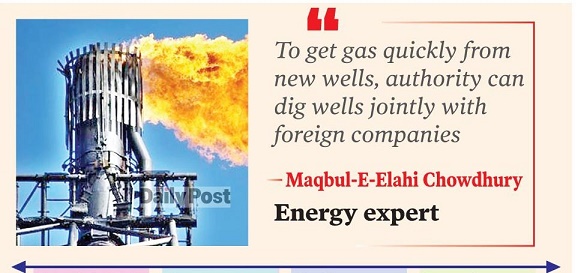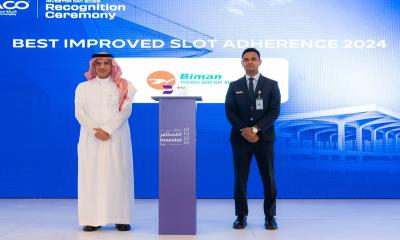# Until 2008, there were 23 gas fields in the country, now it has increased to 29
# Currently 50 new well drilling projects are underway in the country
# In the meantime, 176 mc feet gas supply has been ensured by drilling 15 wells
To get gas quickly from new wells, authority can dig wells jointly with foreign companies
- Maqbul-E-Elahi Chowdhury, Energy expert
Despite new wells finding out and survey for potential gas wells are continuously increasing in the country for past few years, the gas reserve of the country is still unable to meet the demand of the gas crisis.
The energy experts blamed that lacking of exploration and development of new gas field, policy challenges, are mainly lead grapping gas crisis.
According to the Department of Energy, there were 23 gas fields in the country till 2008. Now it has increased to 29. In the last decade and a half, no large gas reserves have been found in the six new gas fields discovered.
Among the newly discovered gas fields, the potential and confirmed reserves (Tupi-Proven and Probable Reserve) of Sundalpur gas field in Noakhali are 50 billion cubic feet (BCF). Besides, 161 BCF gas reserves are found in Srikail Gas Field of Cumilla, 33 BCF in Rupganj Gas Field, some gas reserves are found in Zakiganj of Sylhet.
Apart from this, at least 800 BCF gas reserves have been found in Bhola North and Elisha in Bhola district on the mainland. But Bhola's gas could not be used now. It cannot be added to the national grid as there is no pipeline.
Energy experts claim that about 50,000 lines and square kilometers of land and sea have been surveyed in the last 15 years, but exploration activities were not sufficient.
According to them, surveys alone are not enough to discover new gas reserves. It also needs to dig new wells. But gas wells could not be drilled in the country's land, especially in the western region and hilly areas. They believe that if wells were drilled in these areas, there was a great possibility of getting gas reserves.
According to the Department of Energy, till 2008, 2D seismic surveys were conducted on the ground for gas and oil exploration in the area of 20,017 line kilometers. So far, it has increased to 32,315 km (till June 2023). Accordingly, 12,334 new line kilometers of 2D seismic survey has been done in the last decade and a half.
Until 2008, Petrobangla had 3D seismic survey data covering an area of 1,300 square kilometres. Now it has increased to about 6,000 square kilometers. As of 2008, geological surveys were conducted in an area of 557 line kilometers. At present, the area stands at 19,868 line kilometers.
In the last decade and a half, the survey was conducted in 12,932 line kilometers area for oil and gas exploration in the sea. Through this, an attempt is made to see how oil and gas resources are in the deep sea. Based on the survey, Petrobangla has invited international tenders for oil and gas exploration in the sea, the activities of which are now underway.
Petrobangla officials said 50 new wells drilling projects are currently underway in the country. In the meantime, 176 million cubic feet gas supply has been ensured by drilling 15 wells. Petrobangla has taken initiative to drill 100 new wells. The company wants to drill the well by 2028. Initiatives have been taken to do this work by using BAPEX to dig gas wells.
Energy expert Maqbul-e-Elahi Chowdhury said many surveys have been conducted for gas exploration. BAPEX has conducted these surveys in the past. Some surveys were conducted during the previous government. However, it is not enough to just sit surveying, well will have to be dug. Petrobangla should make an estimate of how many wells it will be able to drill in the next three-four years. Then, to get gas quickly, they can dig wells in the remaining places and dig jointly with foreign companies. The wells that have been drilled in Bhola cannot actually be called new gas fields. These gas fields are mainly evaluation and production wells.
ZH






